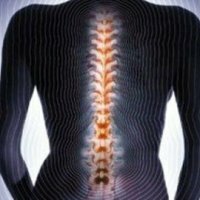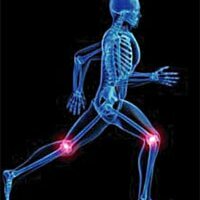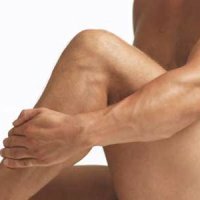Tendinitis: Symptoms and Treatment
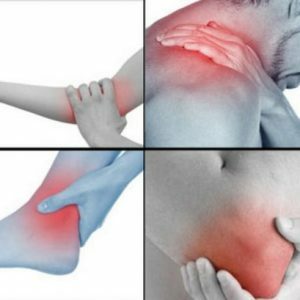
Tendinitis is a group of inflammatory-dystrophic diseases of tendons. There are a lot of them in the human body - each skeletal muscle at the place of attachment to the bones ends in a tendon, however, not every one of them inflames and wears out.In the area of special risk, the tendons of the lower and upper extremities: the shoulder, hips, lower legs, and wrists.
Table of Contents: Causes of tendonitis Symptoms of tendonitis Diagnosis Treatment of tendinitisCauses of tendinitis
Inflammation in the tendon can occur in acute and chronic form.Let's consider, under what conditions each of these forms of the disease develops.
Acute tendonitis is always the result of an injury. Trauma means too much stretching of the tendon, leading to tearing or rupture of individual tendon fibers and their subsequent inflammation.It occurs similarly with sudden movements, lifting of weights, falls, when muscles contract and pull the tendon behind them.To receive such trauma the person can in a life, at performance of the professional duties, and also during playing sports.
In particular, the most risky in terms of developing tendonitis are the following sports:- Tennis.
- Heavy and light athletics.
- Ski and speed skating.
As for chronic tendonitis, it develops gradually and is characterized by slightly different pathological changes of - the tendon predominates in the process of degeneration, and the inflammation remains in the background.In fact, you can say that the tendons just wear out. The reasons for this may be:
-
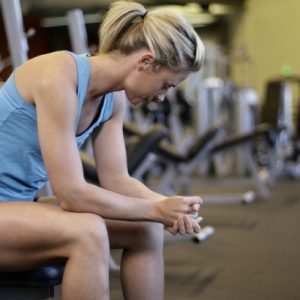 Too intense sports training.When muscles and tendons do not have time to rest, when their microtraumatic damage occurs daily.
Too intense sports training.When muscles and tendons do not have time to rest, when their microtraumatic damage occurs daily. - Constant stress on the tendon during the performance of labor duties.
- Metabolic disorders.
- Systemic autoimmune diseases, in which the "target number one" is connective tissue.
- Chronic infectious diseases and chronic inflammatory foci in the body.For example, joints and tendons can be affected in chronic chlamydia.
- Deforming diseases of joints.Many muscles are attached to the bones in the joint region, so if there are any deformities on the surface of the joints, the muscle tendons will be permanently injured.
- Skeletal pathologies in which certain muscle groups and their tendons are experiencing increased loads.
Symptoms of tendinitis
It is possible to suspect tendonitis by the following symptoms:
-
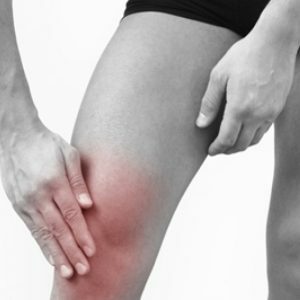 Local painful sensations that occur when active movements occur. This feature of the nature of the pain is explained simply: when the muscle is relaxed, the tendon is also in a free position, if the muscle contracts, the tendon also stretches, and the pain appears accordingly.With some varieties of tendinitis( for example, with calcific tendinitis of the shoulder), painful sensations are especially pronounced. Passive movements in tendinitis can also be uncomfortable, but not painful.
Local painful sensations that occur when active movements occur. This feature of the nature of the pain is explained simply: when the muscle is relaxed, the tendon is also in a free position, if the muscle contracts, the tendon also stretches, and the pain appears accordingly.With some varieties of tendinitis( for example, with calcific tendinitis of the shoulder), painful sensations are especially pronounced. Passive movements in tendinitis can also be uncomfortable, but not painful. - Limitation of mobility of the affected limb .This limitation is purely instinctive - the patient is afraid of hurting himself, so he tries not to move his hand again, to walk gently if the tendon of the leg is damaged, etc.
- The formation of nodules under the skin in the area of the inflamed tendon. These nodules are nothing more than a growth of scar tissue.They appear with the constant traumatization of tendons and a long-term current inflammatory process.To understand that these are really the same nodules, it is necessary to make active movement limb, and the lumps will move along with the tendon.
- Soft-tissue edema .The presence of this symptom is not necessary, especially if the process is chronic.
If the above symptoms appear, you should contact a traumatologist or orthopedist.
Diagnostics
In most cases, a doctor can diagnose "Tendinitis" without using additional research methods. In this he will be assisted by:
- Talking to the patient - having history of trauma, information about sports preferences and specialties of the profession that are associated with traumatizing tendons.
- Inspection. Passive movements in the affected limb will not be painful, but active ones will be painful and even very painful.In the place of greatest discomfort, deformations of the anatomical structures and swelling of the tissues can be determined.
If there are any doubts with the diagnosis, the traumatologist will give direction to:
- Radiography.In this study, tendons are not visualized, but defects in bones and joints can be detected.
- MRI diagnostics is the best way to study the condition of tendons and muscles.
- Laboratory tests - blood test for rheumatic factors and markers of systemic diseases.
In general, the diagnosis of tendonitis is not a difficult task for a qualified specialist. The main thing to him is to apply, not to engage in amateur activities and not to heal himself by advice from the Internet at home.
Treatment of tendinitis
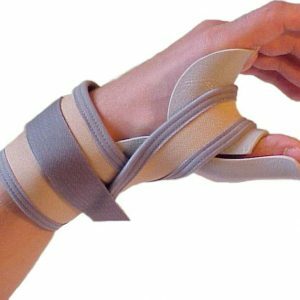 The tactics of treatment of tendonitis is determined by the nature of the pathological process and the causes of the disease. In case of trauma, medical measures consist of temporary immobilization of the affected limb, effective analgesia and anti-inflammatory therapy.If the tendonitis is chronic, in addition to measures aimed at reducing pain and inflammation, it is necessary to treat the underlying disease.
The tactics of treatment of tendonitis is determined by the nature of the pathological process and the causes of the disease. In case of trauma, medical measures consist of temporary immobilization of the affected limb, effective analgesia and anti-inflammatory therapy.If the tendonitis is chronic, in addition to measures aimed at reducing pain and inflammation, it is necessary to treat the underlying disease.
Chronic tendinitis associated with the profession requires not only treatment, but also at least temporary withdrawal from sports or traumatizing the tendons of 's work.Otherwise, the recurrence of the disease will be permanent.
Medication for tendinitis
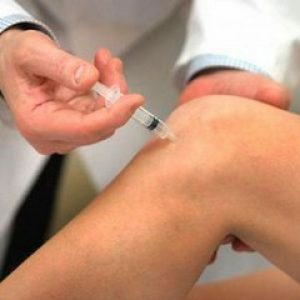 Non-hormonal anti-inflammatory drugs form the basis of therapy for tendonitis.Their patients are prescribed internally, externally and injectively - all depends on the severity of the inflammatory syndrome.In addition, with tendinitis, drugs that improve microcirculation and repair of connective tissue are used.
Non-hormonal anti-inflammatory drugs form the basis of therapy for tendonitis.Their patients are prescribed internally, externally and injectively - all depends on the severity of the inflammatory syndrome.In addition, with tendinitis, drugs that improve microcirculation and repair of connective tissue are used.
If the cause of tendonitis is a systemic autoimmune disease, hormone therapy can be used to prevent the progression of dystrophic processes in the tendon fibers.
Physiotherapy and exercise therapy
After the pain has been reduced, it is possible to proceed to the next stage of treatment, which consists of physiotherapy and physical therapy exercises.
Patients with tendonitis are prescribed physiotherapy procedures that improve the metabolic processes in the affected area, accelerate the healing of the tendon and better restore its functional capabilities.
Usually, the following types of physiotherapeutic effects are applied in tendinitis:
- Electrophoresis with anti-inflammatory drugs.
- Laser treatment.
- Ultrasound treatment.
- Cryotherapy.
Before starting physical therapy, the patient must visit his doctor .This is necessary for the doctor to confirm that the tendon has healed and that it can be developed by .The complex of exercises for recovery after tendinitis for each patient is selected individually by the instructor for exercise therapy .The main goal of such exercises is to make the patient go to his initial motor level( which was before the injury).To do this, from workout to training increases the load, new exercises are introduced, etc.
Surgical treatment of tendinitis
 Surgical interventions are used only in extreme cases, for example, when there is a complete rupture of the tendon fibers or festering has begun. To reduce trauma and reduce the time required for patient recovery, surgery is performed using endoscopic equipment.After such interventions, the operated limb must be gypsum( usually for 1 month) and the patient is prescribed antibiotics and anti-inflammatory medication.Later( after a month), the rehabilitation stage begins - repeated courses of physiotherapy and physical therapy.
Surgical interventions are used only in extreme cases, for example, when there is a complete rupture of the tendon fibers or festering has begun. To reduce trauma and reduce the time required for patient recovery, surgery is performed using endoscopic equipment.After such interventions, the operated limb must be gypsum( usually for 1 month) and the patient is prescribed antibiotics and anti-inflammatory medication.Later( after a month), the rehabilitation stage begins - repeated courses of physiotherapy and physical therapy.
Zubkova Olga Sergeevna, medical reviewer, epidemiologist

